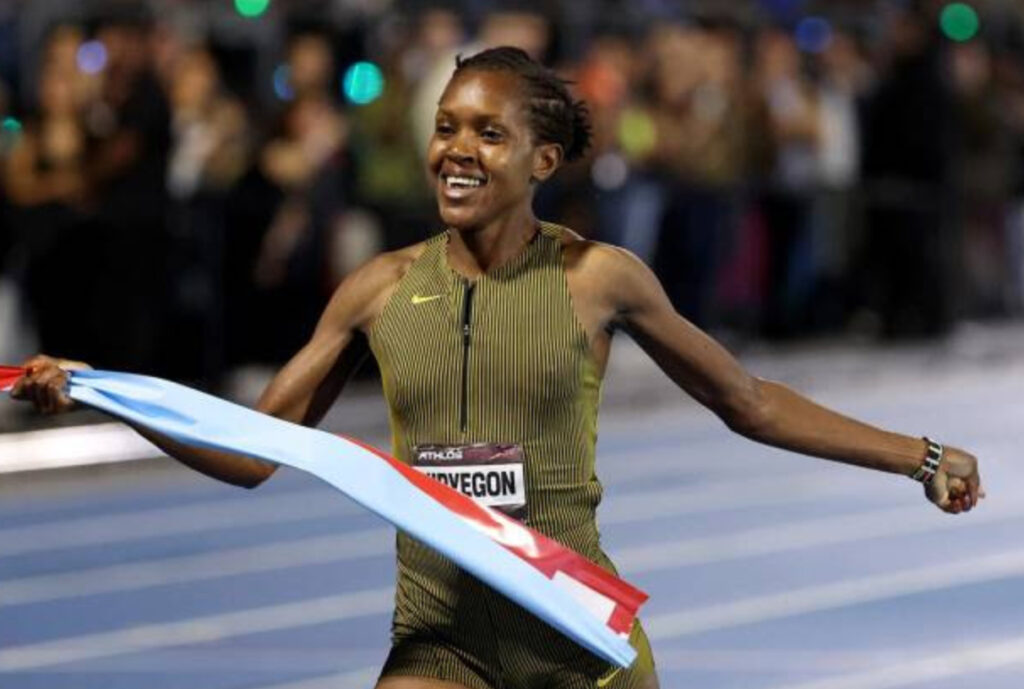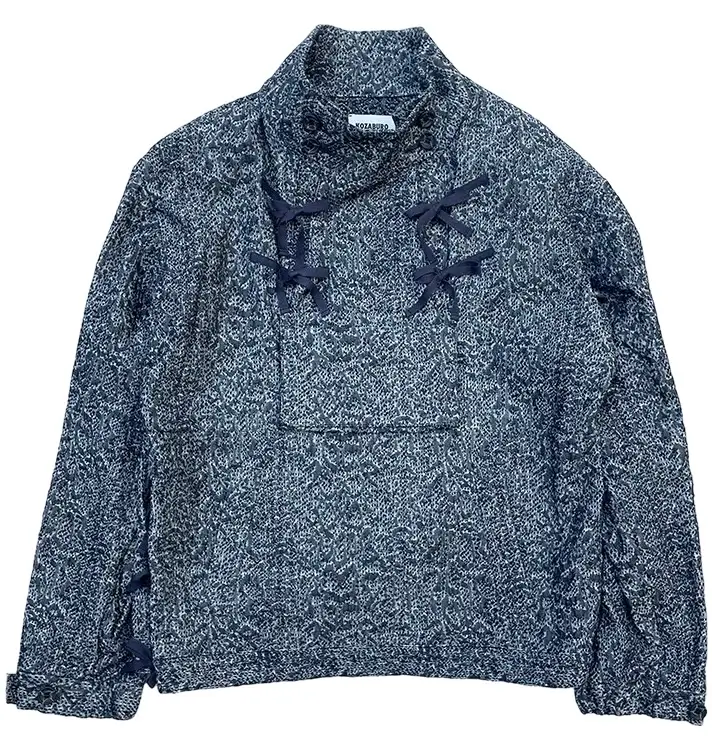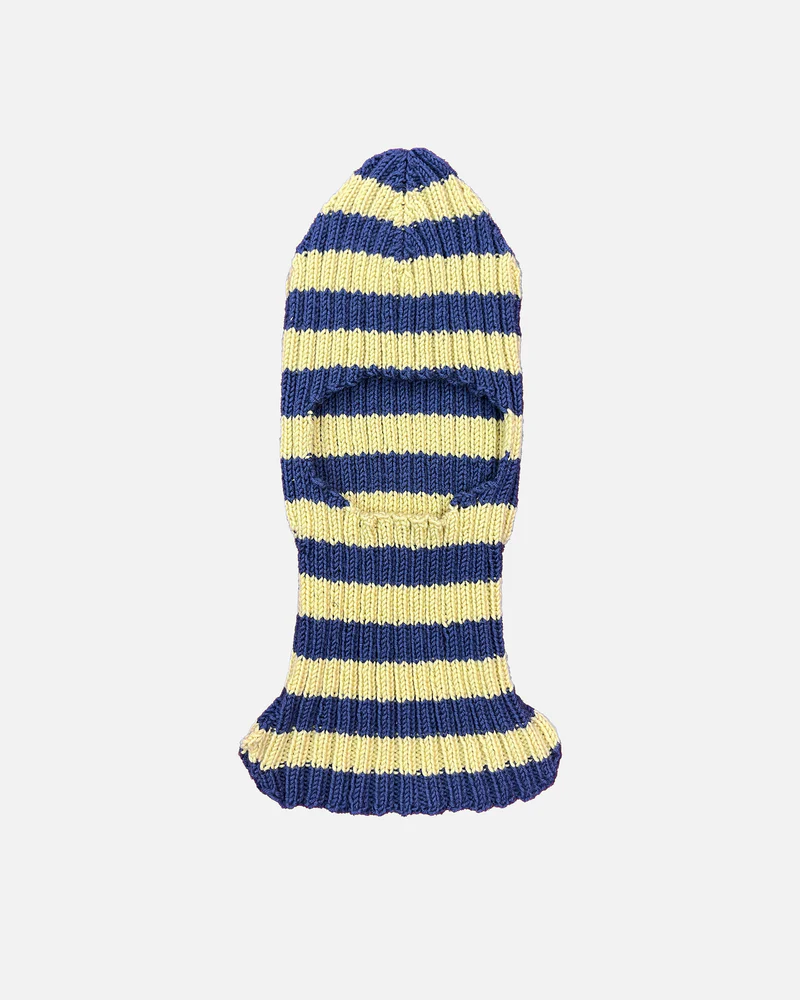On June 26, 2025, in front of a packed Stade Charléty in Paris, the world will watch Faith Kipyegon attempt what was once deemed impossible: a sub-4-minute mile by a woman.
The Kenyan distance runner, already the most decorated female middle-distance athlete of the modern era, will try to remove approximately eight seconds from her own world record of 4:07.64—a staggering leap in a sport where hundredths of a second separate greatness from history.
This is not merely an athletic goal. It is a landmark event, engineered by Nike, reminiscent of the brand’s 2017 Breaking2 project that helped deliver Eliud Kipchoge’s eventual sub-two-hour marathon in 2019. Now, with Breaking4, Nike is shifting the spotlight to women’s sport, betting on one runner to challenge a record that has stood not just physically, but psychologically, for decades.
If successful, Faith Kipyegon’s run will be more than just a time. It will be a redefinition of what the human body—and particularly the female body—can achieve.
Why Faith Kipyegon?
The Most Dominant Miler in History
At just 30 years old, Faith Kipyegon has accomplished more in middle-distance running than most athletes could in two careers. She is:
- A three-time Olympic gold medalist (1500m in 2016 and 2020; 5000m in 2024)
- A three-time World Champion in the 1500m
- The current world record holder in three events: the mile (4:07.64), 1500m (3:49.11), and 5000m (14:05.20)
Her resume reads like a checklist of impossibilities. Yet Kipyegon has always exceeded expectations—on the track, on the global stage, and now, as the face of Nike’s next big moonshot.
Uniquely Positioned for the Attempt
Nike’s decision to build its Breaking4 initiative around Kipyegon is not simply about star power—it’s about data, trajectory, and timing.
In 2023 alone, she broke three world records in the span of 50 days, becoming the first woman in history to hold the mile, 1500m, and 5000m records simultaneously. Each performance showcased a rare fusion of tactical brilliance, aerobic conditioning, and finishing speed.
Her consistency is unmatched. Her motivation, razor sharp.
Nike’s Breaking Projects—Past, Present, and Future
From Breaking2 to Breaking4
Nike’s reputation as a sportswear innovator hit its zenith in 2017, when it launched the Breaking2 initiative: a meticulously orchestrated project designed to see if a human could run a marathon in under two hours.
While the initial attempt (run in Monza, Italy) fell just short, it laid the technological and strategic foundation for Eliud Kipchoge’s 1:59:40 run in Vienna in 2019—albeit under controlled, non-record-eligible conditions.
Nike’s ambitions didn’t end there. With Breaking4, the brand seeks to replicate that same blend of athletic history and media spectacle—but this time with a female athlete at its center.
The Strategic Stakes
Nike has something to prove. While still dominant globally, it has recently lost ground to challengers like Hoka, On, and Adidas in the competitive running market.
By aligning itself with a historic, emotionally resonant goal—and tying that narrative to a woman at the peak of her powers—Nike is not just selling shoes. It’s selling vision.
The tagline writes itself: “She didn’t just break the barrier. She redefined it.”
The Gear, The Science, The Edge
A New Generation of Race Tech
While Nike has not officially disclosed the shoe Faith will wear on June 26, insiders suggest a prototype developed specifically for her footstrike and stride profile is in final testing. Expect the following features:
- Next-gen carbon fiber plate, redesigned for female biomechanics
- Ultra-light Pebax-based foam, 10% lighter than Vaporfly materials
- Minimal stack height, to ensure eligibility under World Athletics rules
- Dynamic traction plate, optimized for both dry and damp tracks
Beyond Footwear: The Performance Ecosystem
Nike’s approach doesn’t stop at shoes. Similar to Kipchoge’s Breaking2 experience, Kipyegon’s Breaking4 attempt will benefit from:
- Pacers moving in a rotating pattern, including male runners acting as wind buffers
- Real-time biometrics tracking, likely fed into Nike’s internal AI coaching system
- Custom nutrition and recovery protocols, designed to maintain lactate threshold output over 1600 meters
- Mental conditioning, incorporating neurofeedback and visualization coaching
This isn’t simply training. It’s systems-level optimization—a fusion of sport and science at its highest form.
The Historical Context of the 4-Minute Mile
The sub-4-minute mile has long stood as a milestone in track and field. When Roger Bannister broke that barrier in 1954, it was hailed as an epochal moment in sports—proof that perceived limits were often just psychological ceilings.
While the men’s record has since dropped to Hicham El Guerrouj’s 3:43.13 (1999), no woman has come within seven seconds of the 4:00 mark until Kipyegon’s run of 4:07.64 in 2023.
The women’s mile, long under-prioritized in programming and prize structure, has lacked the same media attention. Until now.
If Kipyegon goes sub-4, it would be the most significant milestone in women’s distance running in over 30 years—perhaps ever.
Chapter 5: Risk, Reward, and the Controversy of Tech
How Far Is Too Far?
As with Kipchoge’s marathon, questions are already surfacing about the legitimacy of such engineered performances. Will the shoes offer too much of a mechanical edge? Are the pacers too scripted? Is the course too tightly controlled?
World Athletics, the sport’s governing body, has approved the attempt—but purists will always question the encroachment of technology in performances that are supposed to be “natural.”
The real question is: Does it matter?
If the public is moved, inspired, and energized by the spectacle—perhaps the old definitions of purity need to evolve.
Cultural Tensions
There’s also the broader concern that women’s records are often viewed through different critical lenses than men’s. Where Kipchoge was celebrated globally for his tech-assisted 1:59:40, will Kipyegon face pushback?
Nike is reportedly aware of these risks—and planning messaging carefully to center Kipyegon’s athleticism first, innovation second.
Cultural Implications Beyond Sport
A Reset for Female Athletics
The women’s mile has historically been overlooked by both media and organizers. A successful sub-4 run would:
- Elevate the event to global status
- Inspire a new generation of girls and young runners
- Pressure meet organizers to add the mile to more elite programs
- Reignite interest in mid-distance track events, currently overshadowed by sprints and marathons
Nike’s Broader Messaging
For Nike, Breaking4 is about more than just product. It’s about reclaiming the narrative in running, particularly among women and younger consumers.
Expect follow-up campaigns focused on:
- Empowerment language (“Rewrite the record,” “No more lines to cross—just new paths”)
- Spotlight on Kenyan excellence, emphasizing the country’s sustained dominance in distance events
- Retail drops tied to the event, including limited-edition spikes, apparel, and commemorative packaging
One Lap, Infinite Meaning
On June 26, the track at Stade Charléty will be more than a competition surface. It will be a stage for possibility, endurance, and imagination.
Faith Kipyegon is not just trying to run a time. She’s trying to reshape the timeline of what we thought was possible for female athletes. Whether she breaks 4:00 by one-hundredth of a second or falls just short, the attempt will stand as a turning point—not just in sport, but in representation, equity, and ambition.
For Nike, it’s a high-stakes gamble. For Kipyegon, it’s a legacy-defining chapter. For the rest of us, it might be the moment we watch a wall fall—and a door open.
Event Recap
- Athlete: Faith Kipyegon (KEN)
- Goal: Sub-4-minute women’s mile
- Date: June 26, 2025
- Location: Stade Charléty, Paris
- Organizer: Nike Breaking4 Project
- Current Record: 4:07.64 (Faith Kipyegon, 2023)
No comments yet.








